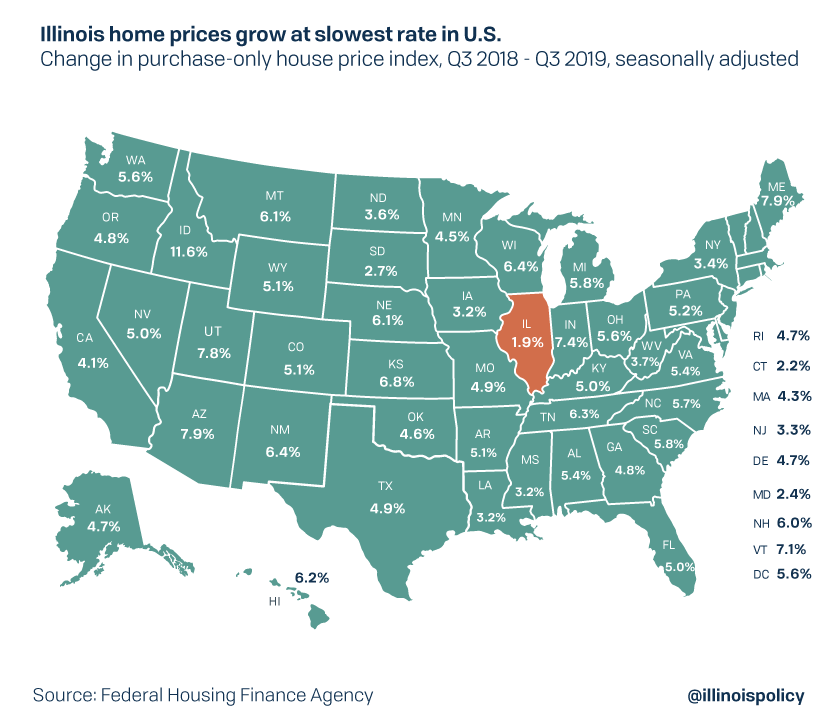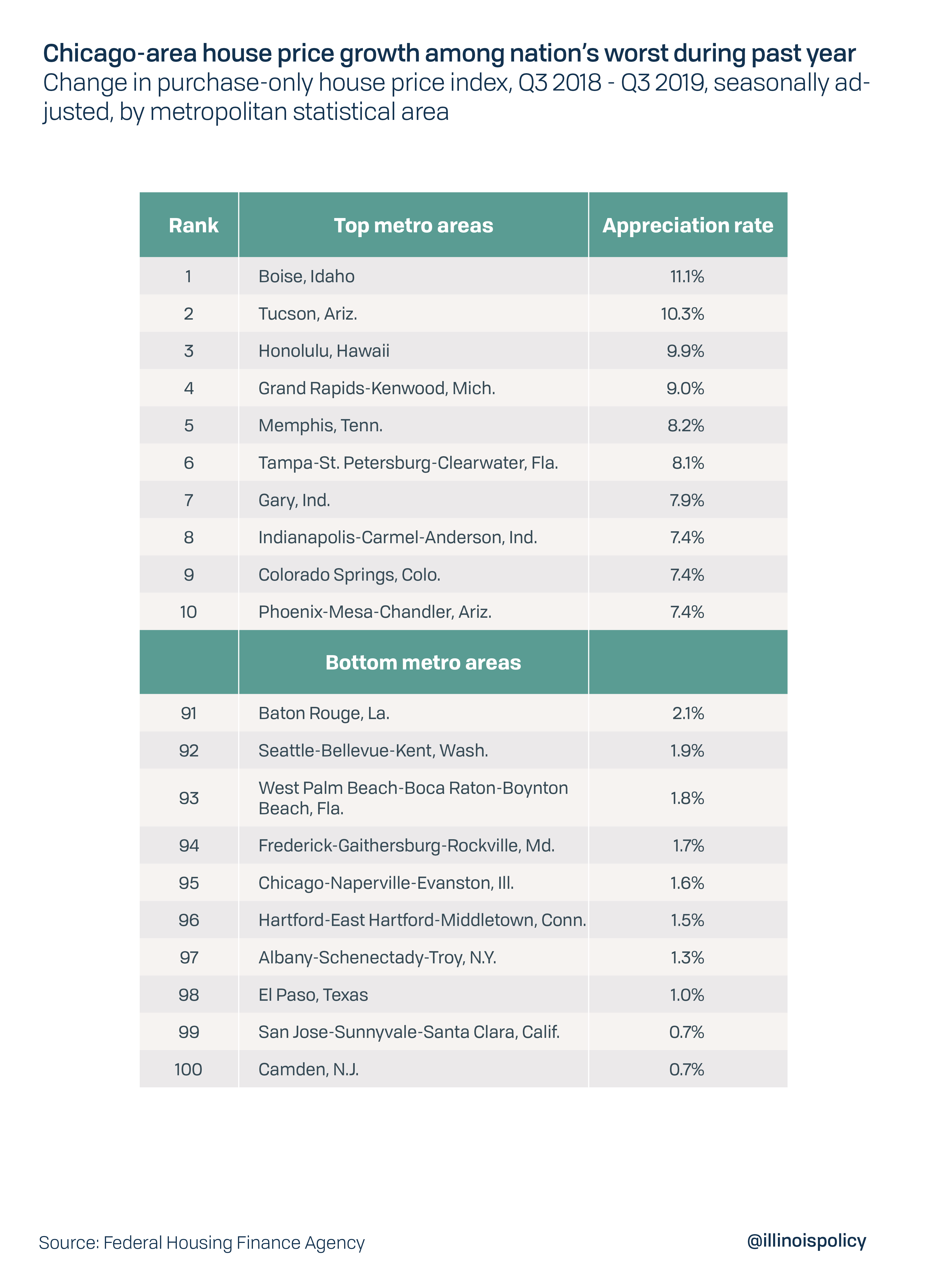Illinois home price growth slowest in nation last year
Home price appreciation in Illinois was the slowest in the U.S. between the third quarter of 2018 and the third quarter of 2019, federal data showed.
U.S. annual house price appreciation dipped below 5% annually for the first time since 2015, growing at a 4.9% annual rate, but the Illinois data was particularly bad.
Illinois house price appreciation was the lowest in the country, with home values growing 1.9% from the third quarter of 2018 through the third quarter of 2019, according to recently released data from the Federal Housing Finance Agency.

Illinois’ worst-in-the-nation performance was particularly bad as five out of six neighboring states experienced home price appreciation at or above the national rate. Slow appreciation rates raise the total cost of homeownership – the net cost of mortgage payments, property and income taxes, and maintenance after accounting for appreciation.
The state’s poor performance from Q3 2018 through Q3 2019 comes as no surprise because appreciation rates have been lagging the rest of the nation since the Great Recession. The state’s high tax environment continues to make the returns to housing investment among the worst in the nation and increases the overall cost of homeownership.
The state’s largest housing market, the Chicago metropolitan area, also fared poorly relative to other U.S. metro areas for house price appreciation in the past year. During the past four quarters, the Chicago-Naperville-Evanston metropolitan area saw house price appreciation of 1.6%. The area’s performance ranked 95th out of the nation’s 100 most-populous metro areas.

While Chicago’s housing market performance was among the worst in the nation, neighboring Gary, Indiana, experienced some of the strongest appreciation in home values of all metro areas. In fact, Lake County, Indiana, where Gary is located, is one of the top destinations for Illinoisans leaving Cook County. From tax year 2017 to tax year 2018, Cook County lost nearly 4,300 residents on net to Lake County, Indiana. A lower cost of living, lower taxes and greater returns on housing investment that lead to lower costs of homeownership may be part of the reason Illinoisans are more likely to move to neighboring states.
Home prices are tied in part to the demand by prospective homeowners. As Illinois and the Chicagoland area continue to lose population, housing demand can be expected to fall, and house price appreciation will likely continue to lag the rest of the nation.
So long as Illinois continues to pursue massive income and property tax hikes instead of necessary structural spending reforms, Illinoisans will likely continue to find better opportunities elsewhere. Then the housing market will continue to struggle.
